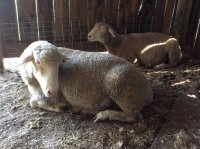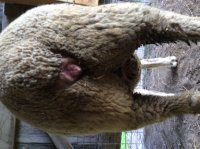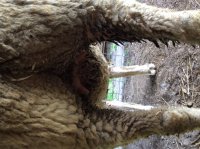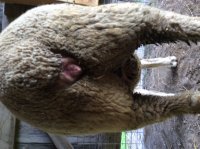- Thread starter
- #11
Maple_Lane_Lambs
Exploring the pasture
Well... I know why there is no lambs yet. We got their registered papers and he put the ram in January/February and took him out May 1st. Two days before we went to see them and put a deposit on them. So the latest date will be October 7th! When should I start feeding grain? I don't want to start too early and have giant lambs.
When should I start feeding grain? I don't want to start too early and have giant lambs.
Thanks
 When should I start feeding grain? I don't want to start too early and have giant lambs.
When should I start feeding grain? I don't want to start too early and have giant lambs. Thanks

 I have heard if you feed the ewe too much the lamb will be big and have a difficult birth.
I have heard if you feed the ewe too much the lamb will be big and have a difficult birth.


